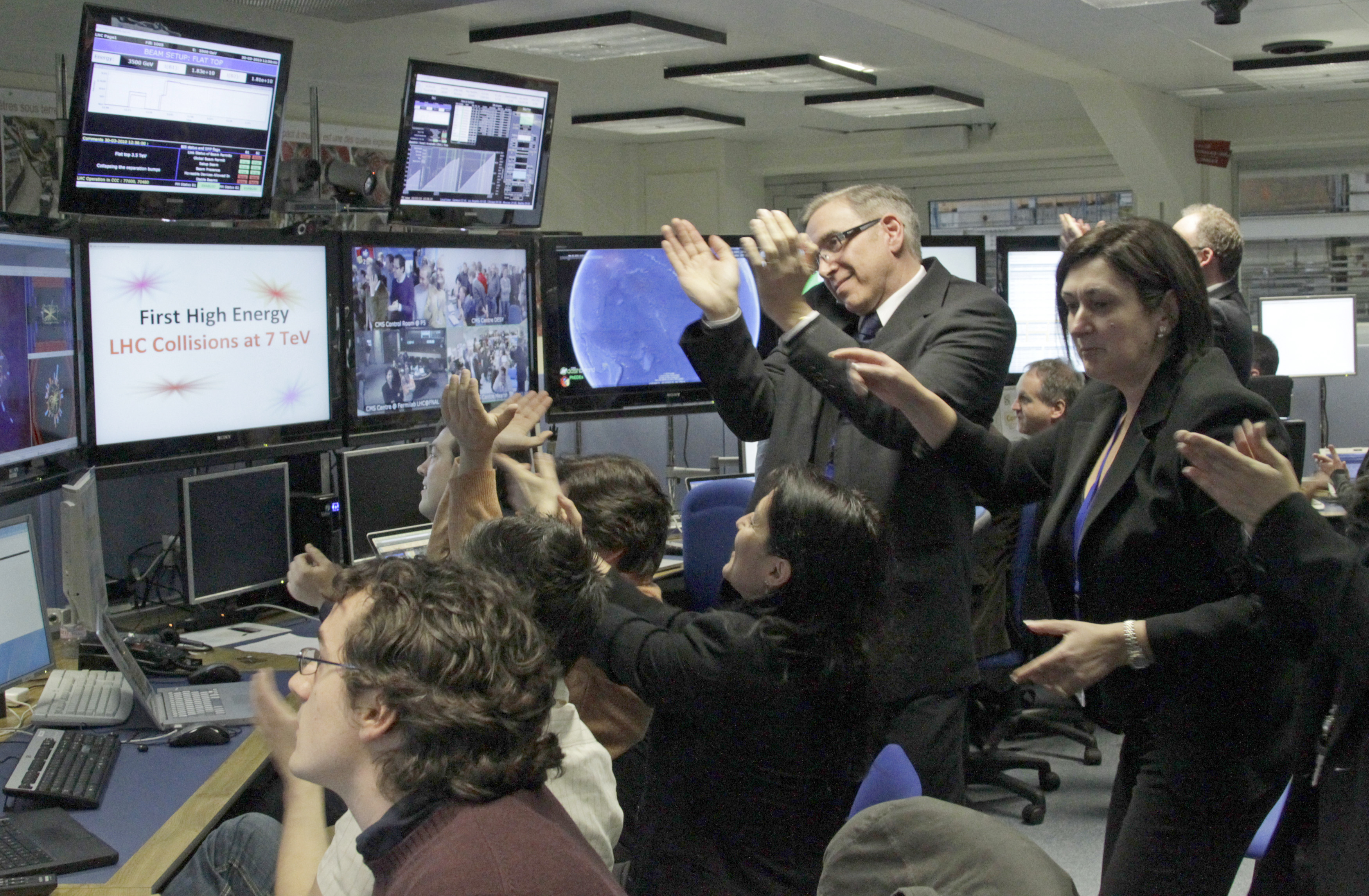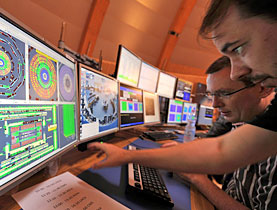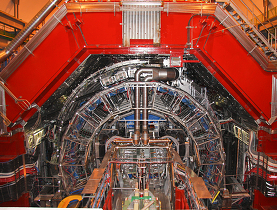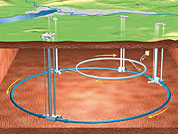First of many “little Big Bangs” pop at Cern

Scientists using the “Big Bang” machine deep in the ground near Geneva have successfully smashed protons infused with the highest energy levels ever achieved.
Though it will probably be months before computers at the European Organization for Nuclear Research (Cern) can make sense of what exactly happened, researchers hailed the experiment as a real Star Trek moment.
“We are going into new territory where no man has gone before,” Jean-Pierre Revol, head of heavy ion collisions, told swissinfo.ch. “Today is an important step.”
For ten days proton beams have been whirling independently around the 27km-long tunnel at the Large Hadron Collider (LHC) at 3.5 trillion electron volts – the most powerful levels achieved by any particle accelerator in the world. That’s more than three times as much energy as Chicago’s Tevatron accelerator can produce but just half the energy the LHC is designed to achieve.
On Tuesday scientists put those beams on a collision course, a feat that Cern’s director general Rolf-Dieter Heuer likened to firing needles across the Atlantic in hopes that they collide.
Researchers say the experiment is the first step in a long journey toward understanding the very essence of the universe. The LHC, the world’s largest machine, operates 100 metres below the ground at temperatures colder than outer space. It is designed to recreate what happened when the universe was just trillionths of a second old, some 14 billion years ago.
Light on dark matter
There was palpable excitement among workers at the centre on Tuesday, when scientists took the first steps toward finding what could prove to be something of a holy grail in particle physics – the confirmed existence of the Higgs boson. Never seen but widely believed to exist, the particle could explain what gives matter its mass.
Jürgen Schukraft, a spokesman for Cern’s heavy-ion programme, said a fascination with revolutionary physics, black holes and the film “Angels and Demons” had generated huge interest in the experiments. On Tuesday media from all over the world descended on the facility, where bottles of champagne waited unopened and chilling in refrigerators.
But Revol cautioned that no one should expect ground-breaking discoveries immediately.
“We’re not going to discover the Higgs just like that,” he said. “It could take two years – if it does exist.”
Researchers are also hoping the experiments will afford insights into the mysteries of dark matter. It, too, is a hypothetical substance that could make up as much as 90 per cent of the universe. Scientists believe it is invisible – just five per cent of the universe can be seen by the human eye – and does not emit or absorb light, although it can still tug on matter as gravity might.
Staying focused
Scientists began working on the collisions early on Tuesday morning in hopes of producing the first of many “little Big Bangs” around 9am. That did not happen and collisions were repeatedly postponed throughout the day.
The problem was coordinating the numerous magnets that focus the proton beams to such high energy levels, said Destina Hatzisotiadou, a researcher at the site. Each magnet must be precisely calibrated to keep the beams stable. Only then can they be placed on a collision course.
“For all to function properly, the magnets must have the right current values,” she told swissinfo.ch. “If it goes down in one magnet, we lose the beam. That’s normal.”
The collider, a $10 billion (SFr10.6 billion) facility, is housed underground outside Geneva and stretches into France. Scientists first turned on the machine in September 2008 but had to shut it down nine days later after it overheated and needed $40 million in repairs and improvements.
In December 2009 scientists successfully smashed protons at the facility but at energy levels just one-third of those achieved during Tuesday’s collision.
A small group has sought unsuccessfully in the past to shut down the experiments over fears that the collisions would produce black holes that could gobble up the world in an apocalyptic catastrophe. Cern scientists dismiss the idea.
Tim Neville, swissinfo.ch (with input from Simon Bradley in Geneva)
In the LHC, high-energy protons in two counter-rotating beams are smashed together to search for exotic particles.
The beams contain billions of protons. Travelling just under the speed of light, they are guided by thousands of superconducting magnets.
The beams usually move through two vacuum pipes, but at four points they collide in the hearts of the main experiments, known by their acronyms: ALICE, ATLAS, CMS, and LHCb.
When operational, the detectors see up to 600 million collision events per second, with the experiments scouring the data for signs of extremely rare events such as the creation of the so-called God particle, the yet-to-be-discovered Higgs boson.

In compliance with the JTI standards
More: SWI swissinfo.ch certified by the Journalism Trust Initiative




You can find an overview of ongoing debates with our journalists here. Please join us!
If you want to start a conversation about a topic raised in this article or want to report factual errors, email us at english@swissinfo.ch.